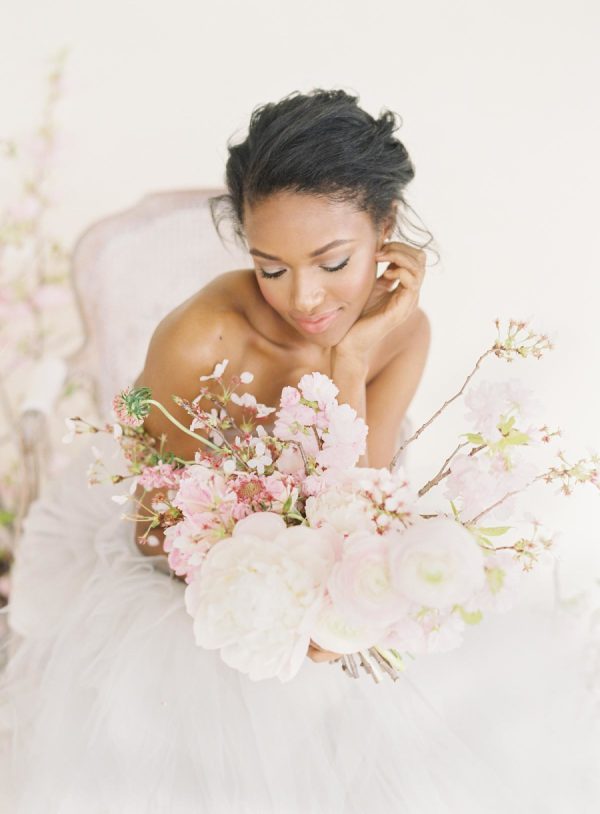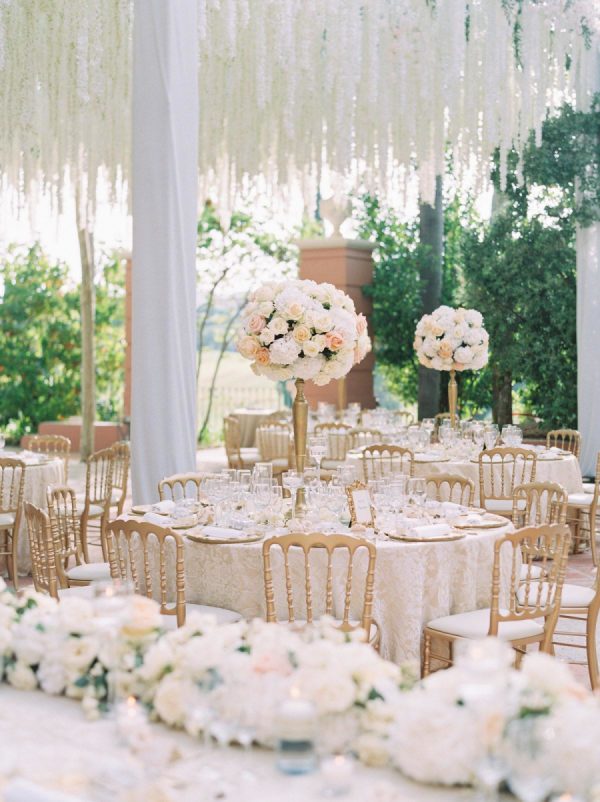What To Consider When Determining Your Wedding Floral Design
Florals? For a Spring wedding? (We all know where this is going)… groundbreaking. But what blooms are actually “in season” in Spring? Will they work well with your color palette? What about the venue? When it comes to choosing the right flowers for your Big Day, there are many things you should consider. Time to get out that note pad and listen up, friends! Below, we’re walking you through the most important things to keep in mind when determining your wedding floral design.

Photography by Angela Newton Roy Photography | Floral Design by Wild Green Yonder
Seasonal Availability
Flowers are a living art form, subject to the limitations and miracles of the changing seasons. Seasonality determines so much of what is possible in the floral design process, from types of blooms available, to the overall feeling and mood of seasonally-driven designs. Think of how light and effervescent spring cherry blossoms feel, compared to the golden warmth of fall foliage. When designers speak of seasonality, they are referring to much more than which flowers are available at a given time—they’re interested in the feelings, ideas, and colors associated that season. You know those vibes that just overtake you during pumpkin spice season? That’s exactly what we’re talking about – it goes way beyond what’s just in your coffee cup, to encompass an entire mood.

Photo by Julia Kaptelova Photography | Floral Design by Pedro Navarro
Venue
When you daydream about your wedding florals, you likely picture them as part of an entire scene. Maybe you imagine a vineyard dinner with olive and rosemary table runners, or instead think of flowers framing the entrance to a grand estate venue. Regardless of the details, your venue and your flowers are very much linked.
Venue will determine the entire scope of your florals: how many arrangements are needed (and at what size), and if you’d like any installations and where, but it will also influence the entire look and feel of the day. Because everything should flow from one element to another, the style of venue and florals should compliment each other, not contrast or compete with one another.
Photo by Sophie Epton Photography | Floral Design by Remi and Gold
Color Palette
There’s no doubt about it: colors have emotional power. While soft neutrals leave us feeling balanced and light, deep jewel tones give us a sense of warmth and intimacy. Because of this, your wedding color palette will tell guests the overall mood of the day. Florals will not only be guided by that, they’ll simply bring life to it! Through movement, composition, and texture, floral arrangements add a depth to your palette that cannot be achieved any other way.
Photo by Stephanie Gan Photography | Floral by Laura’s Floras
Keep in mind that floral colors aren’t straightforward – the amount of pinks alone that a floral designer has access to is unreal and unbelievably liberating. For example, a Distant Drums rose is apricot at the center with pale pink edges, but over time it fades to mauve. These kinds of complex (or mature) colors can be used to your advantage, expressing painterly and nuanced palettes.
Photo by Lauren Fair Photography | Floral Design by Faye and Renee Floral and Event Design